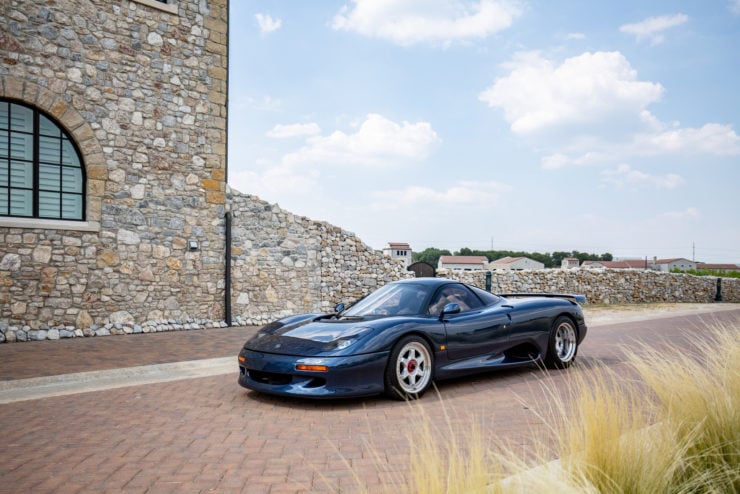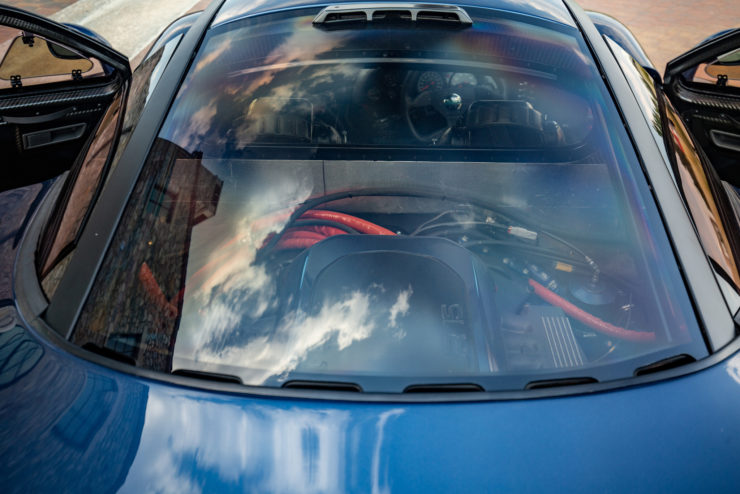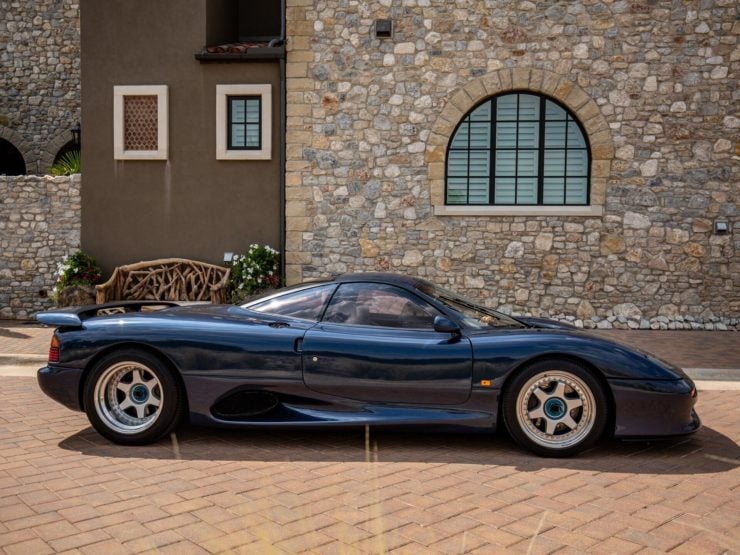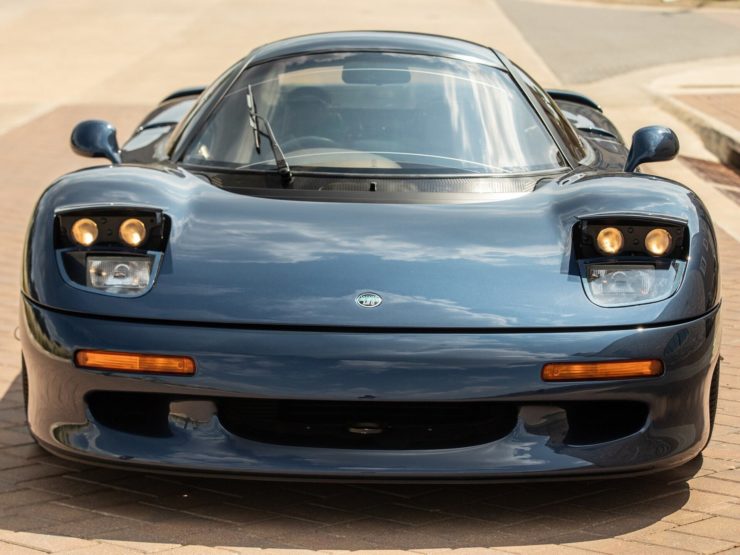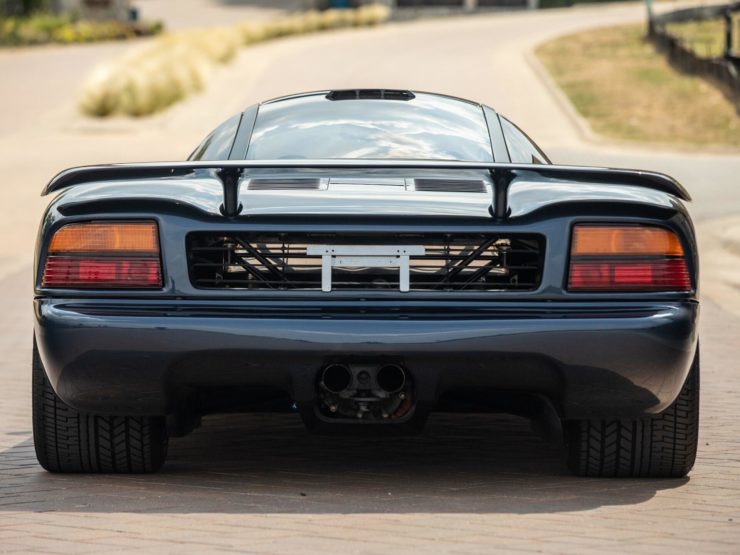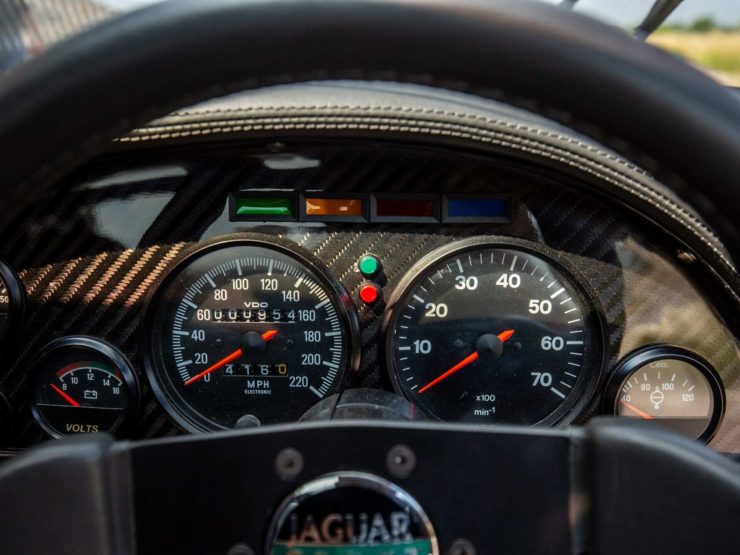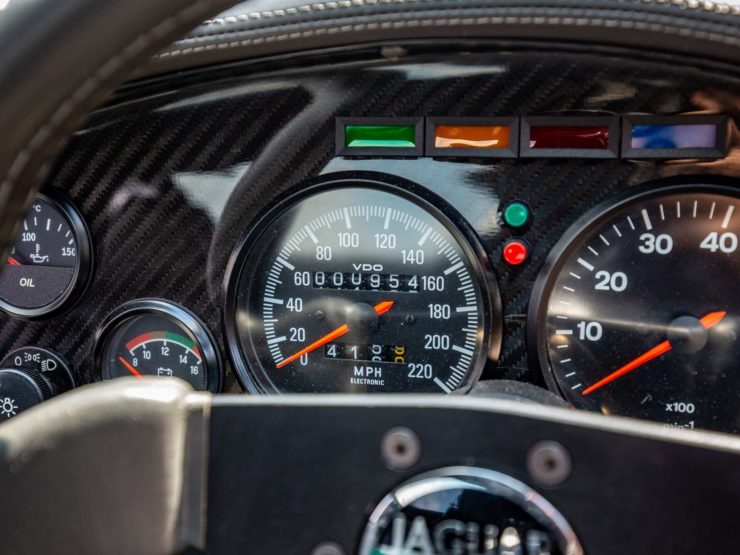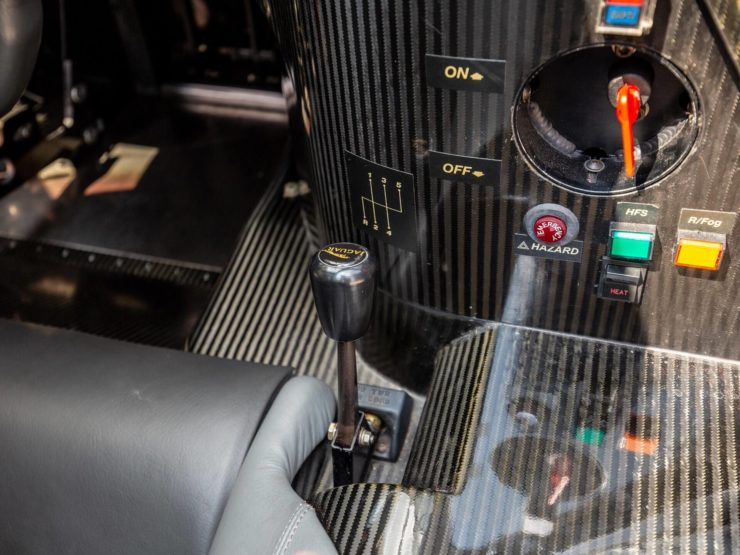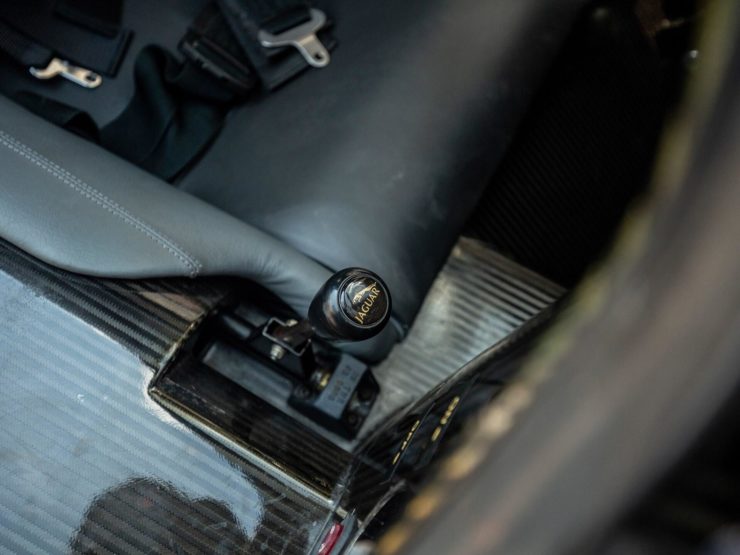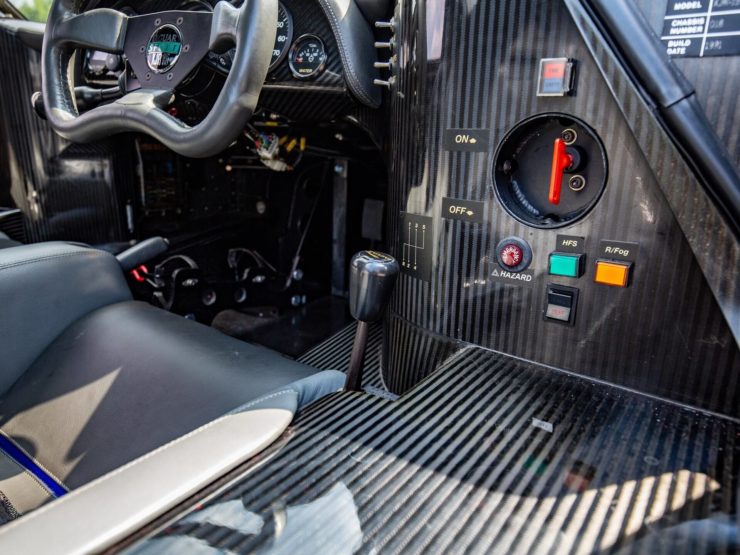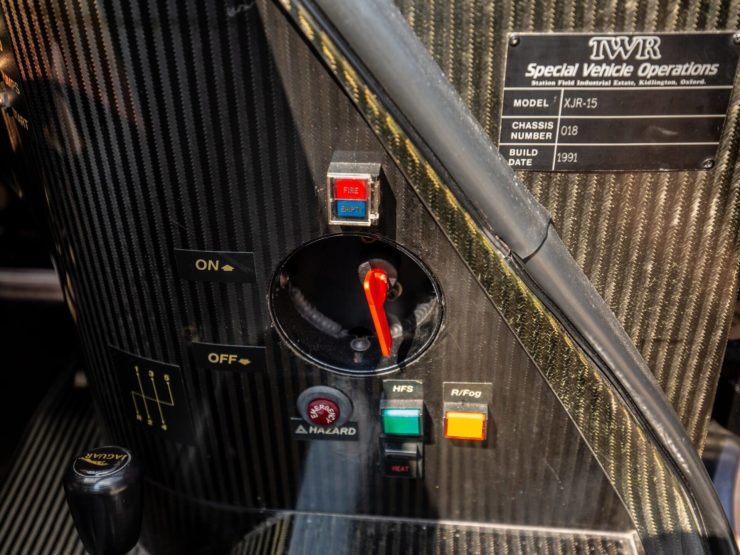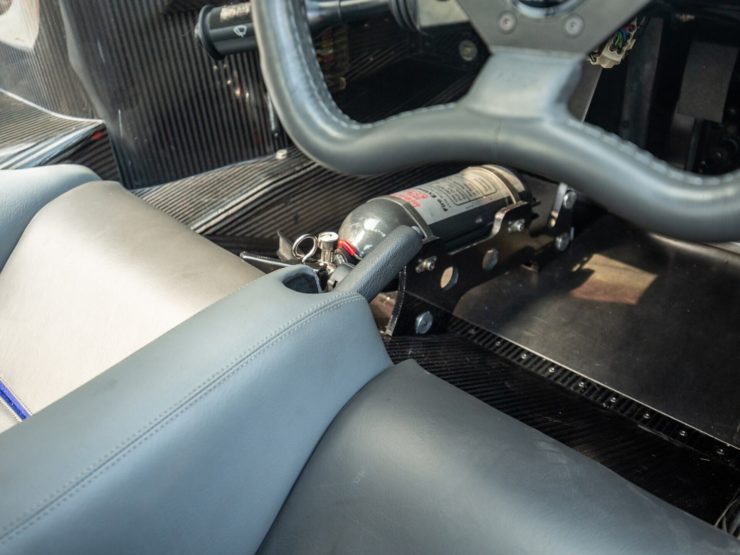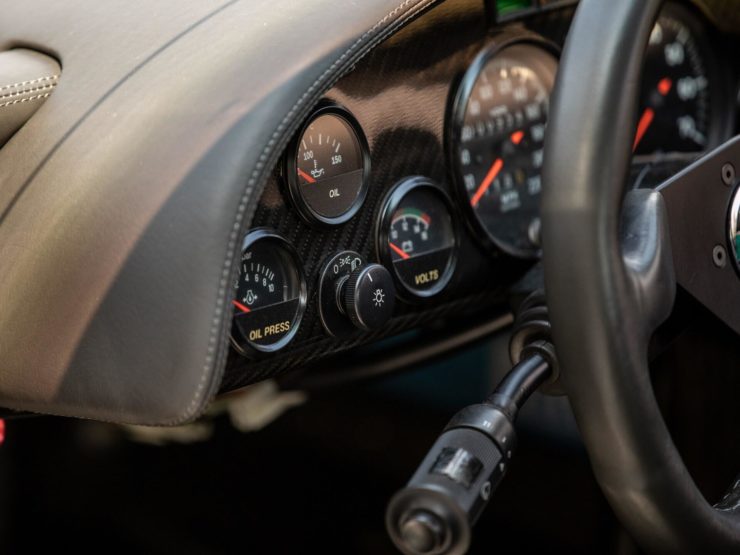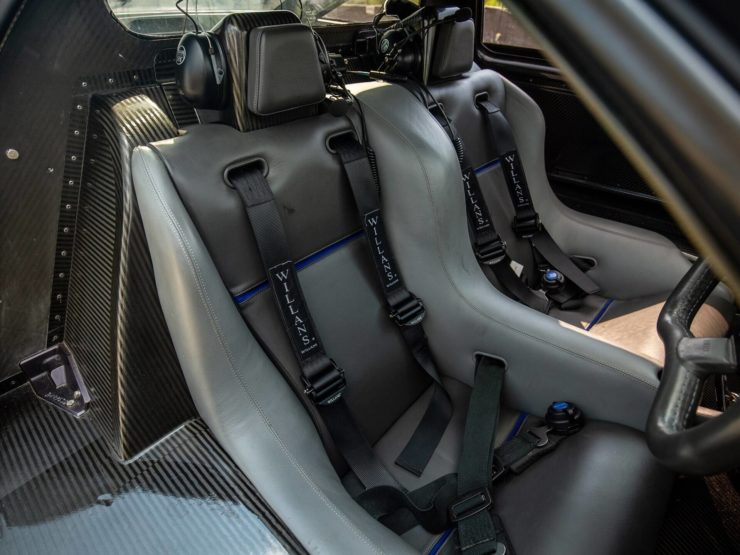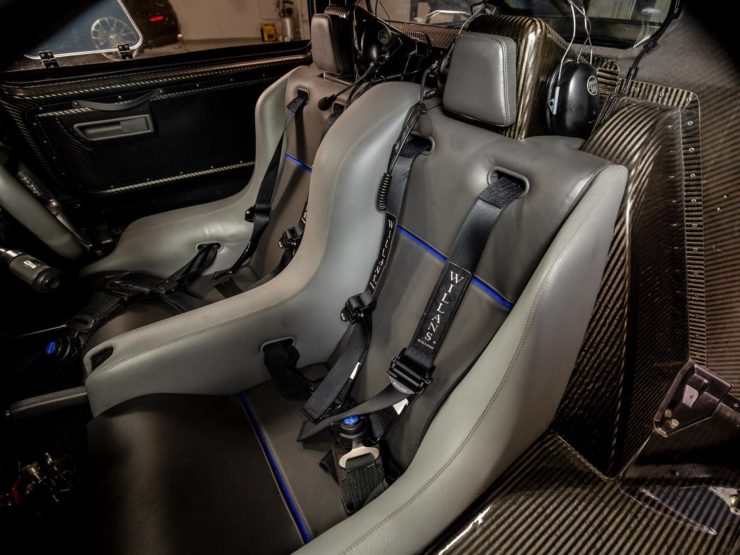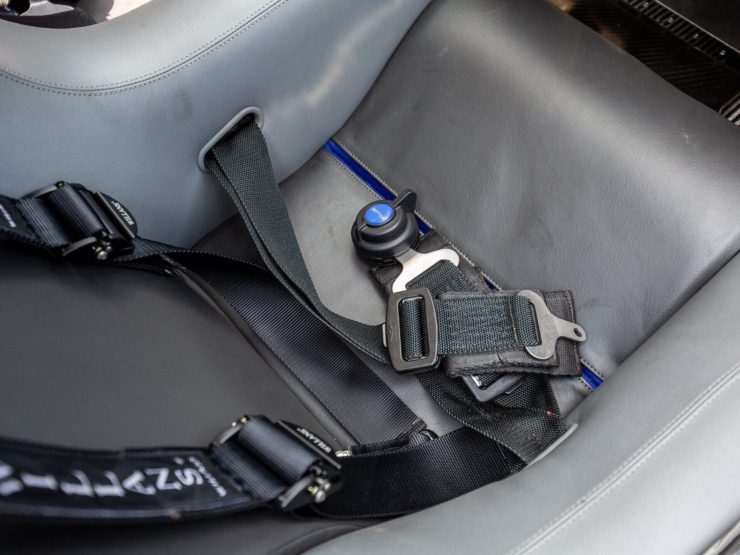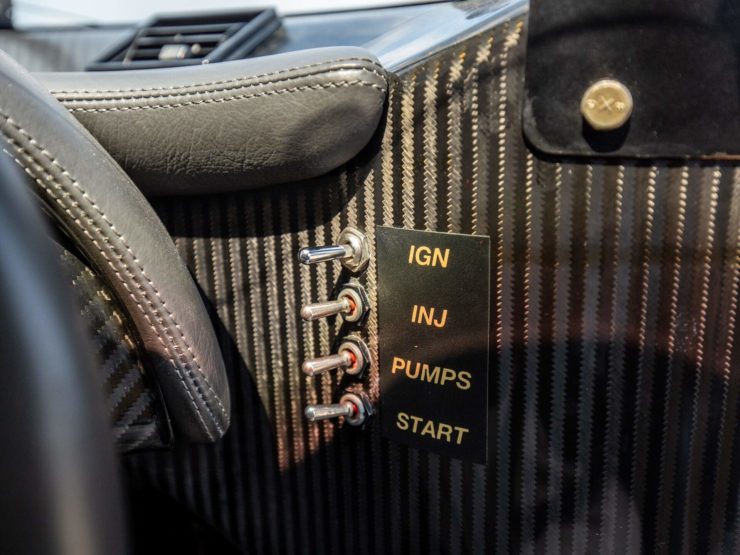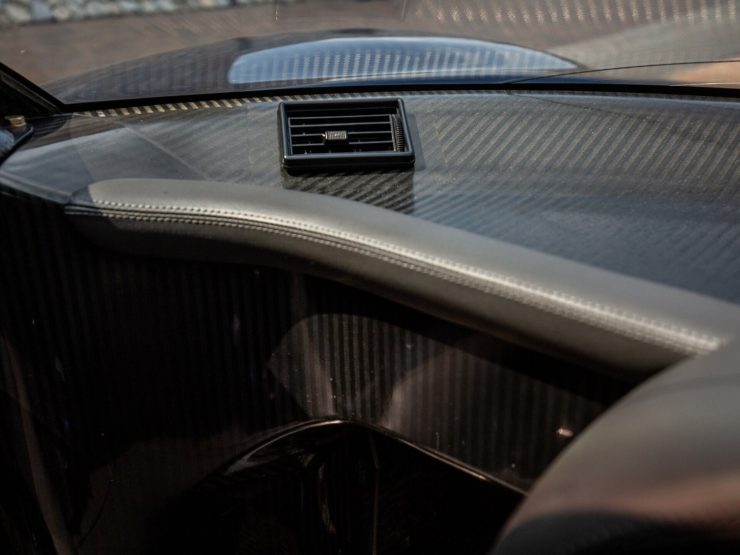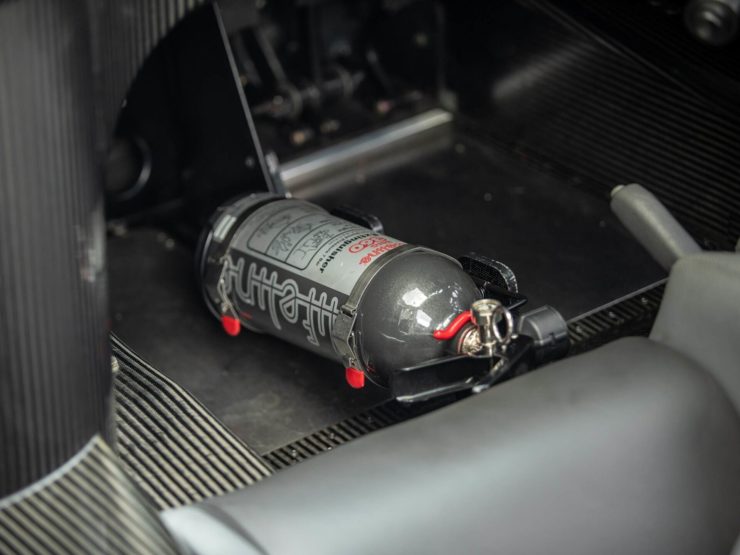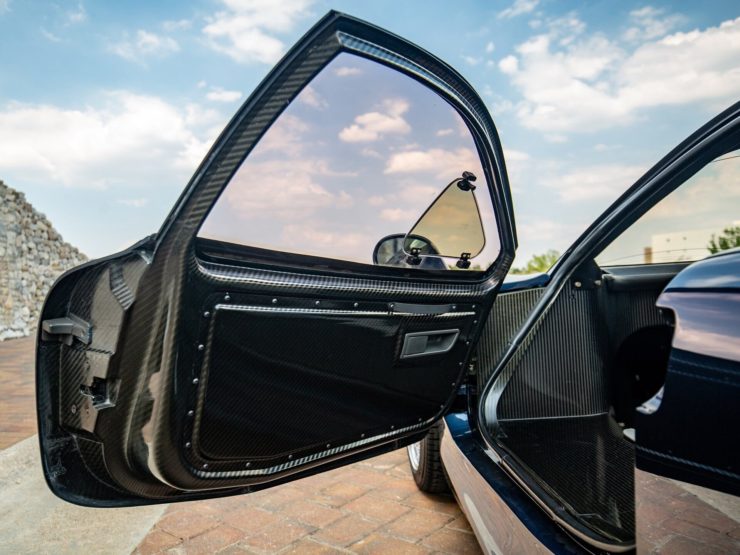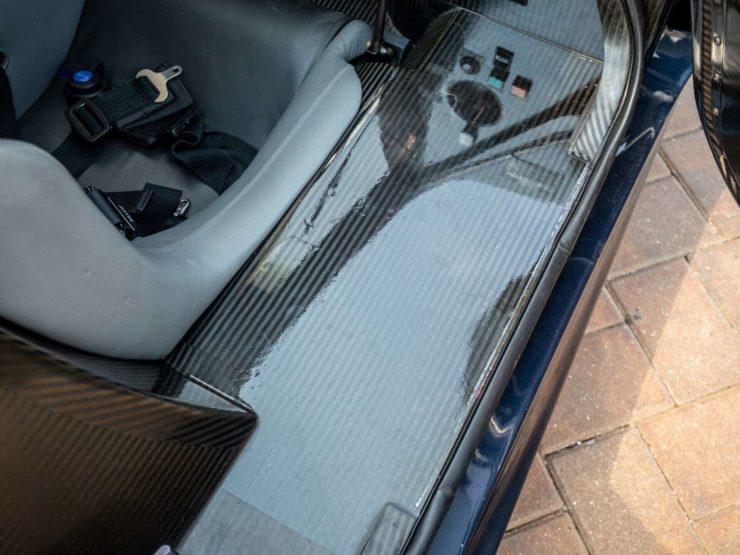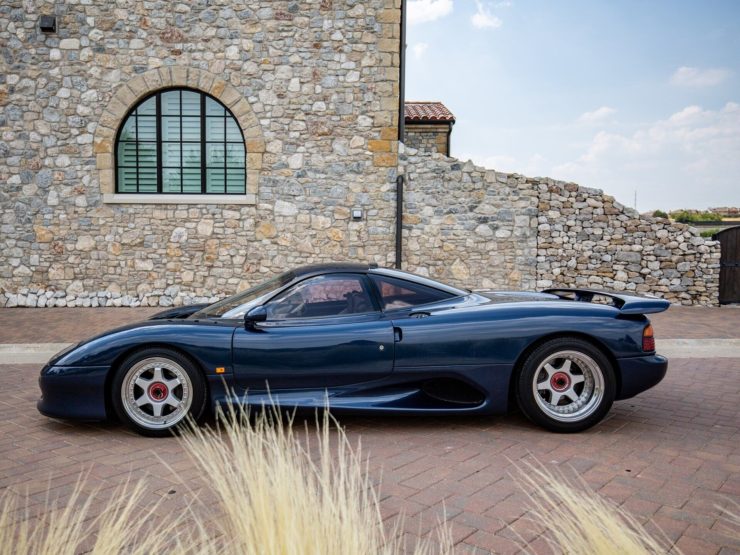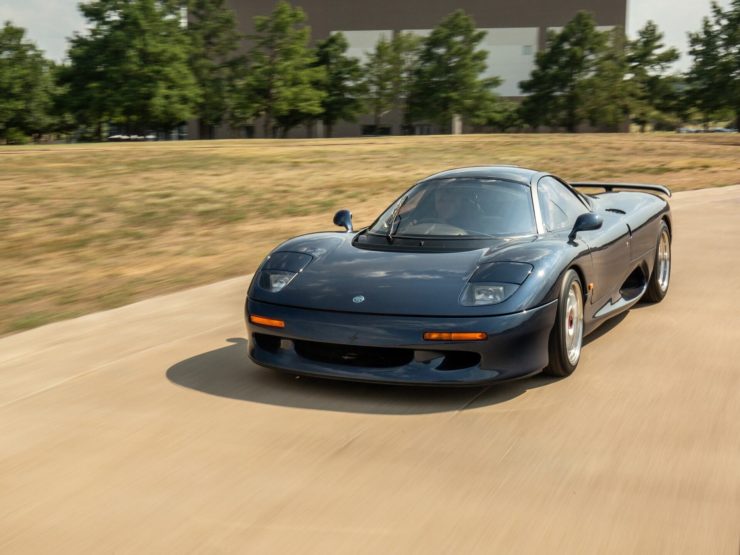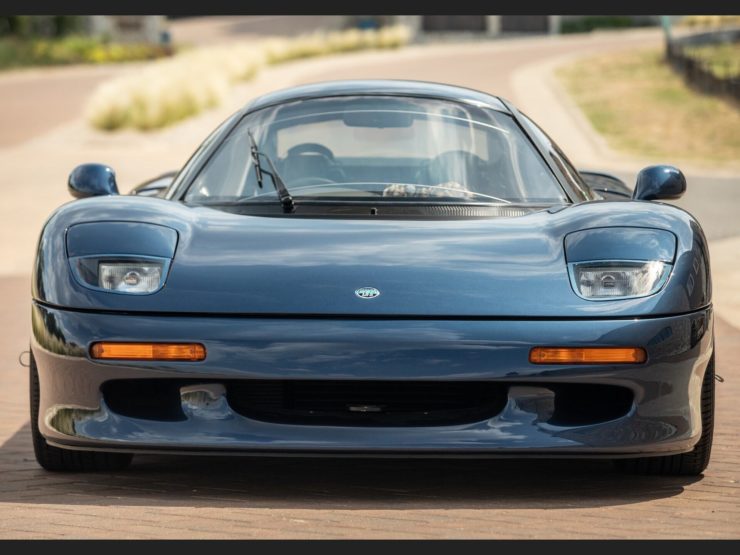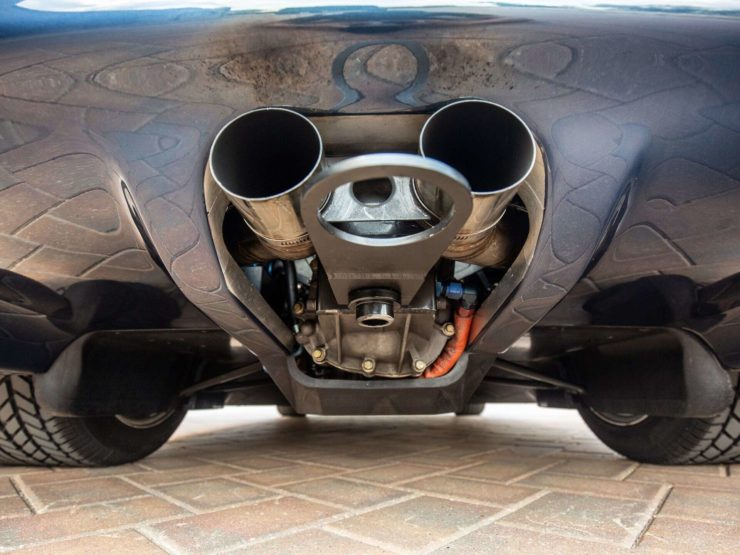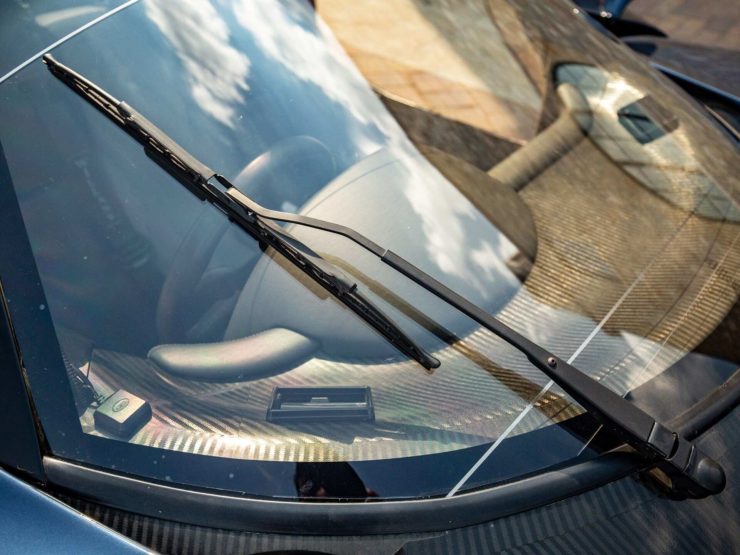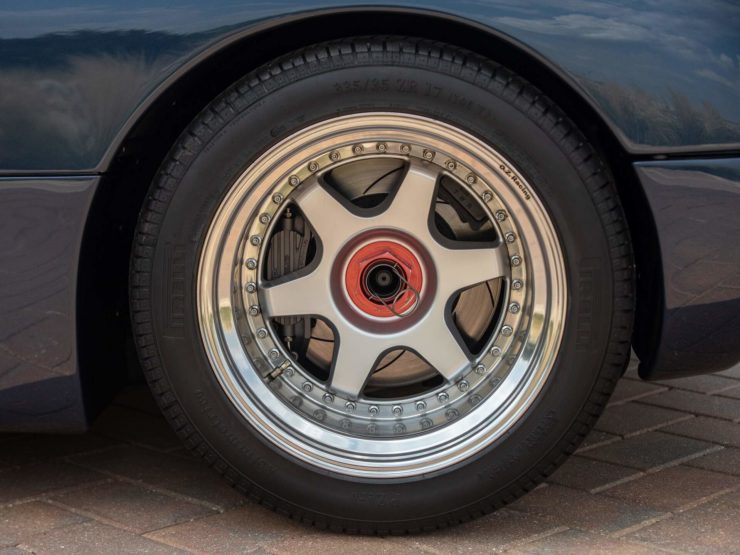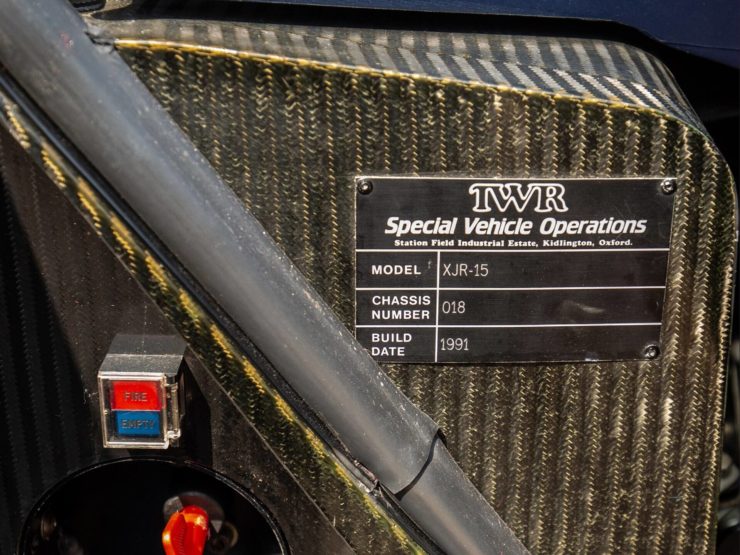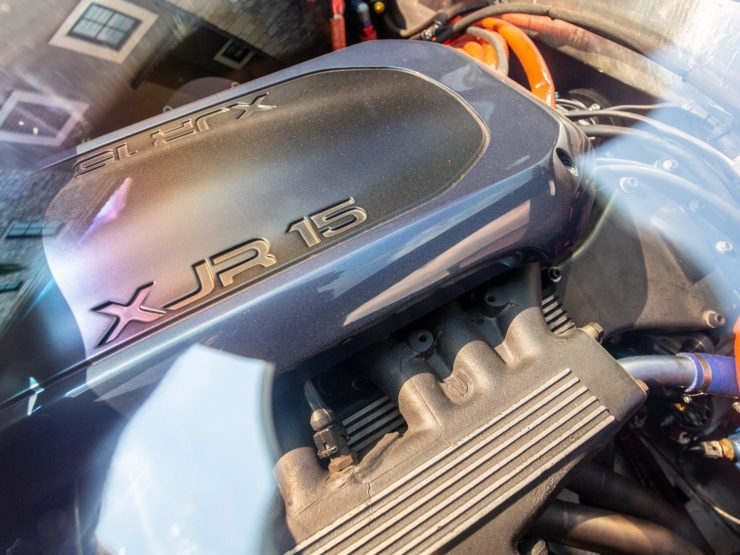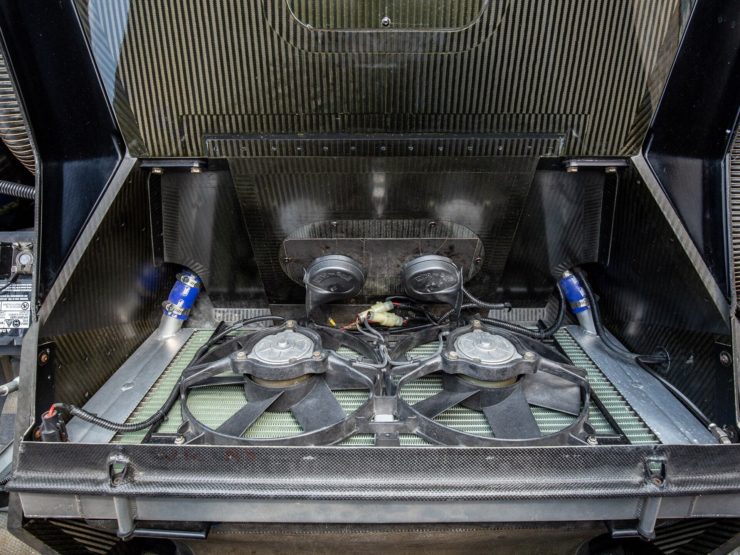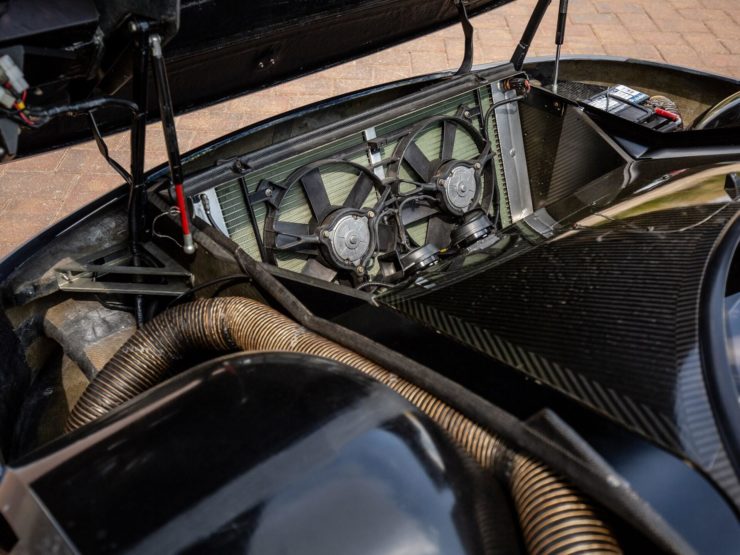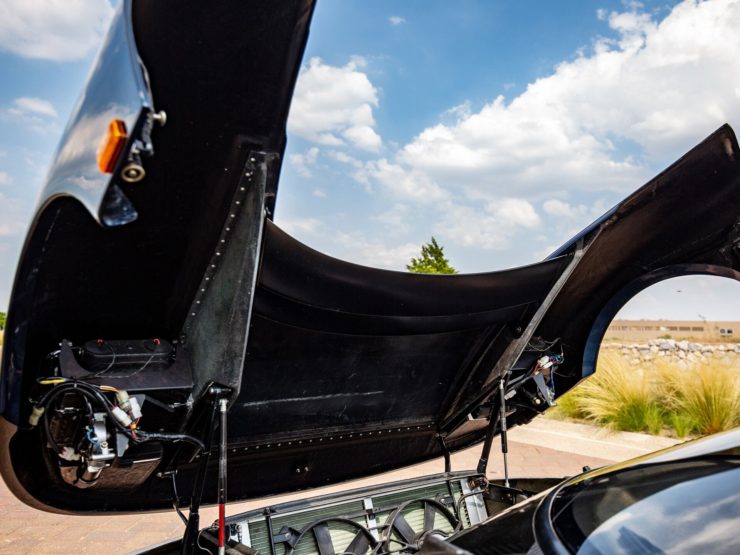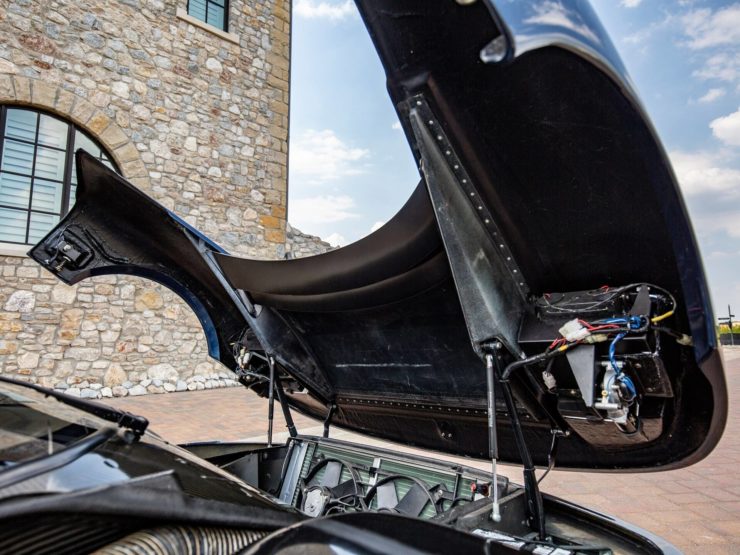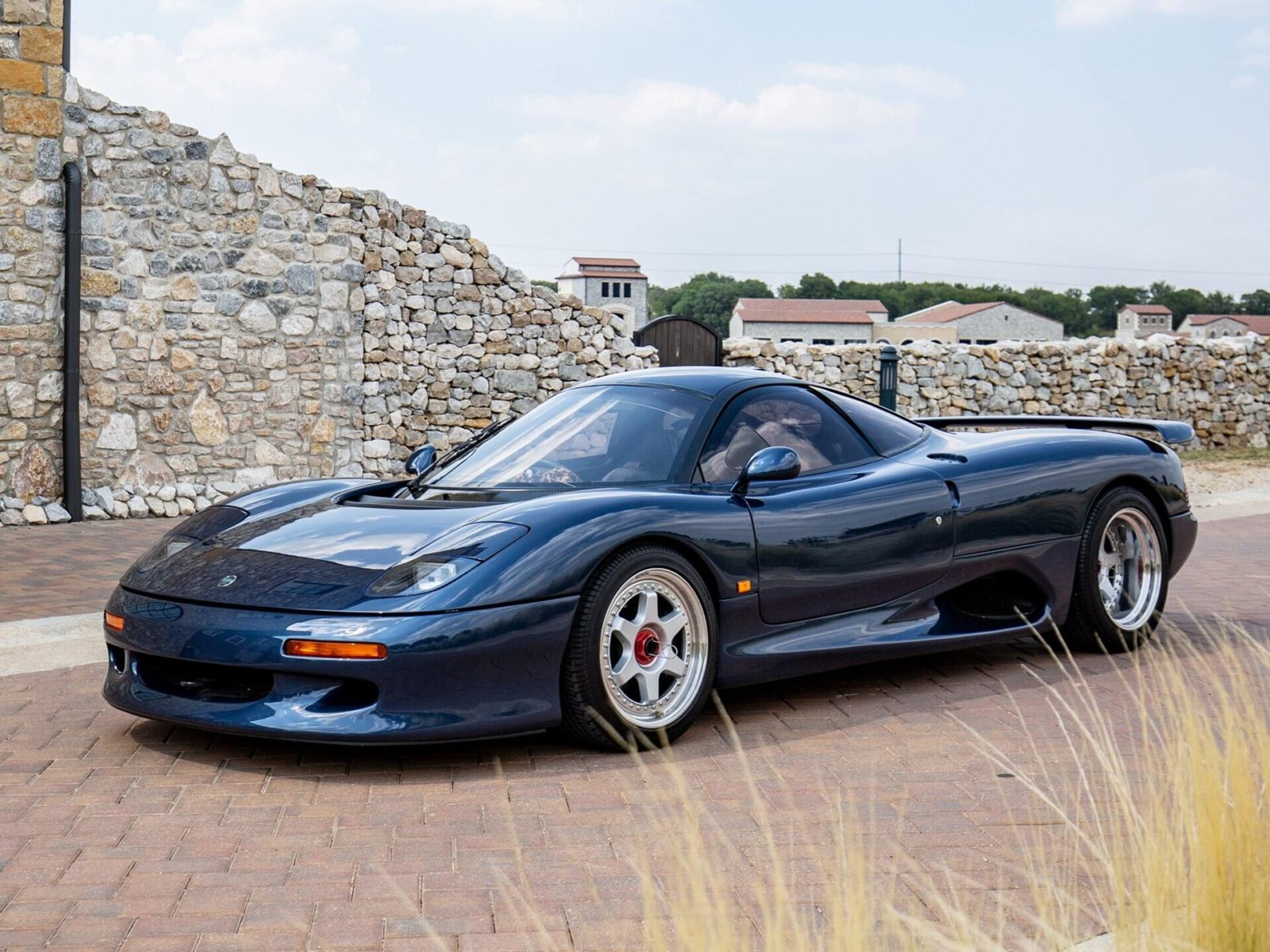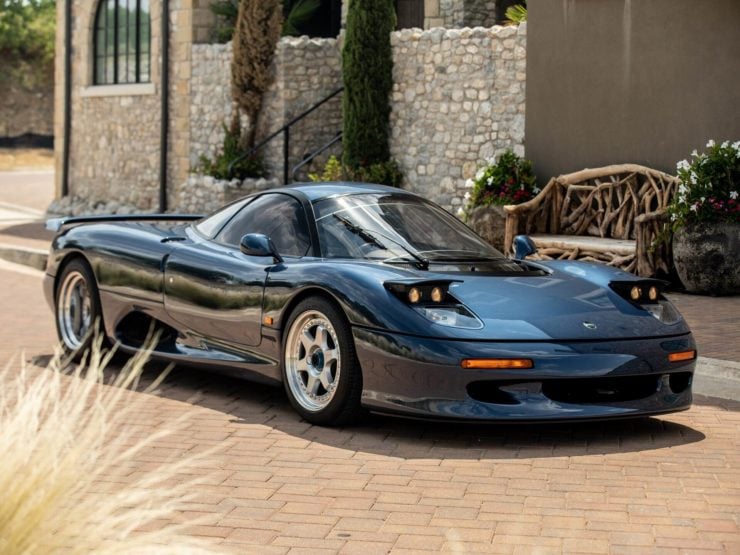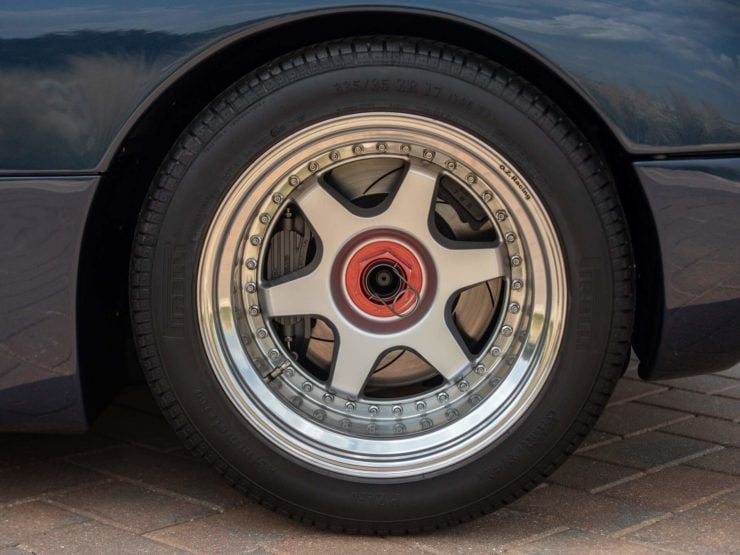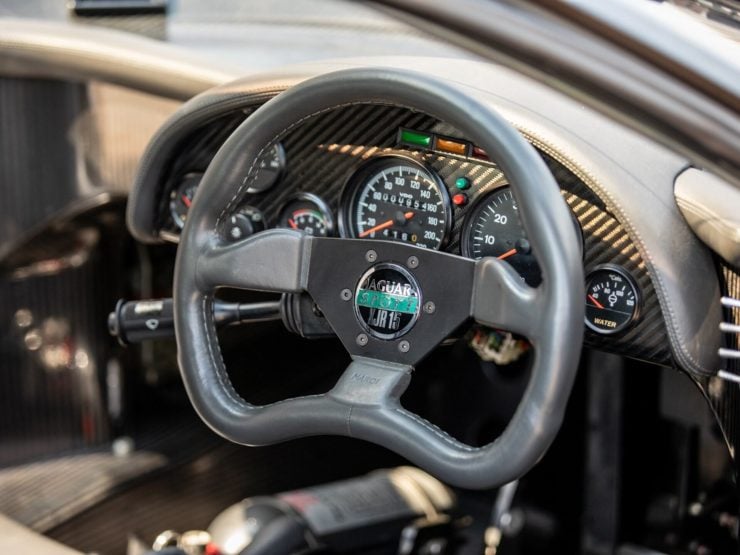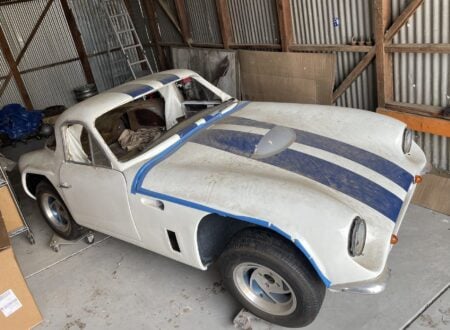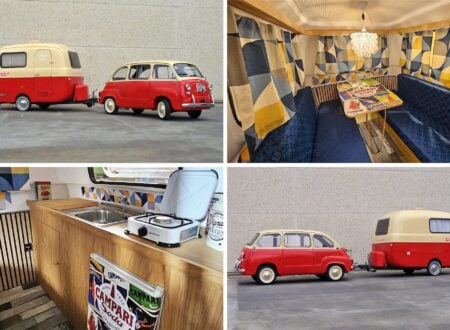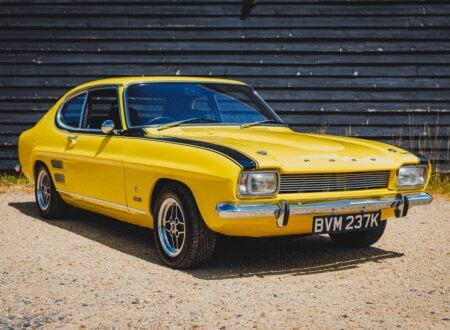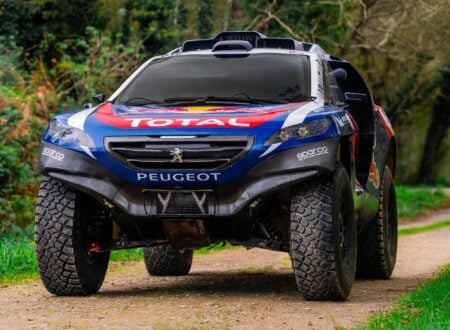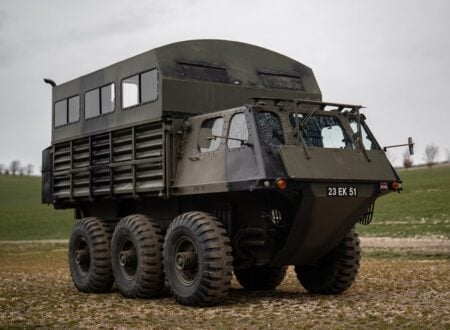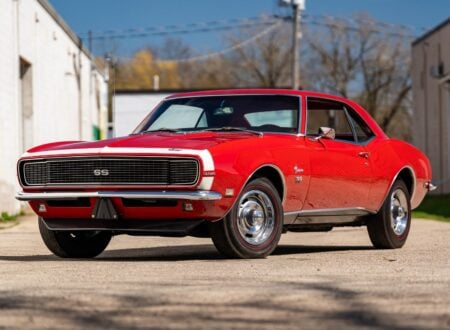In 1982 when Jaguar entered into a partnership with Tom Walkinshaw Racing to form JaguarSport they probably didn’t anticipate creating a road-legal sports car that would be a modern throwback to the Le Mans-winning Jaguar D Type.
But after a number of 24 Hours of Le Mans wins a high performance Le Mans winning car became the foundation of the road-legal XJR-15 – one of the most desirable supercars of its time.
Fast Facts – The Jaguar XJR-15
- After Jaguar’s three decade break from motorsport they formed a partnership with established racing company TWR (Tom Walkinshaw Racing) to ease back in for a season or three and test the waters.
- The resulting partnership gained Jaguar a renewed and respected place in modern sports car racing and included prestigious Le Mans 24 Hours wins in 1988 and again in 1990.
- As a result of JaguarSport’s successes not only at Le Mans but in sports car racing internationally there were a significant number of sufficiently wealthy people who had the desire to own and drive the closest thing to a Le Mans car they could get, not just for the racetrack, but also on ordinary roads.
- It was for these people that the road-legal Jaguar XJR-15 supercar was created.
The Quest To Win Again At Le Mans
In 1922 when Sir William Lyons founded his “SS” Swallow Sidecar company, the original ancestor of Jaguar Cars, he had a vision for building cars that exemplified beauty.
In 1934 the company morphed to become SS Cars and then at the end of the Second World War it needed to change name again. This was due to the very negative connotations of the name “SS” caused by the Nazi “SS” organization.
Sir William spent some time considering what to rename his company to be and decided that the Jaguar being a svelte, beautiful and fast moving cat, would be the right name and best connotation for his company. It was his aim to create svelte, beautiful and fast moving motor cars – and Sir William had a deep appreciation of both beauty and performance.
The name Jaguar had been used on a pre-WWII SS production model, and so after the war the model name became the marque name, giving the company some continuity.
By the 1950’s Jaguar had established both its aesthetic and performance credentials and its racing cars – the Jaguar C Type and then D Type had racked up a series of wins in the prestigious Le Mans 24 Hours race in France.
Jaguar ended their participation after 1957, and turned their full attention to road cars. In 1961 Sir William Lyons team created what Enzo Ferrari confessed was the most beautiful car in the world – the Jaguar E Type, a high performance road car inspired by the company’s earlier racing cars.
Jaguar would not again engage in tackling the Le Mans race for thirty years, and it would not be Jaguar’s own independent instigation that would return them to the Circuit de la Sarthe, the impetus came from Tom Walkinshaw Racing (TWR), which had been founded in 1976 by Scotsman Tom Walkinshaw.
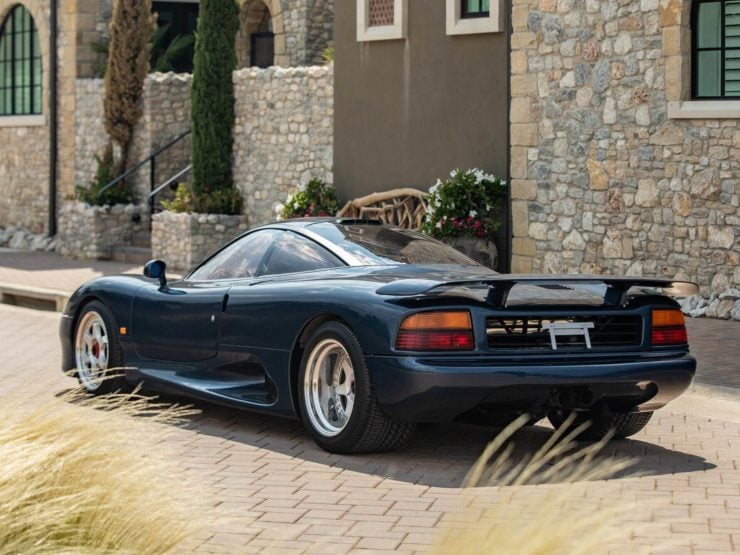

TWR established a working relationship with Jaguar Cars called JaguarSport in 1982 which led first to the entering of a Jaguar XJS in the European Touring Car Championships, in which campaign they racked up a number of wins, beginning the process of rebuilding Jaguar’s performance car street cred, something that had fallen by the wayside in the thirty years since the Jaguar C type and D Type had wowed the crowds at Le Mans.
In 1985 TWR created the Jaguar XJR-6 as a weapon with which to tackle the World Sportscar Championship, and then in 1986 they replaced it with a new design, the Jaguar XJR-8, which was installed with a modified Jaguar V12 engine that was increased in capacity to 7 litres and delivered not less than a transmission shattering 720 hp (540 kW).
Two of the three XJR-8 cars entered into the Le Mans race of 1987 failed to finish while the third car managed to soldier on despite transmission problems to finish a respectable fifth.
The XJR-8 had proved its potential however with wins in the 1987 World Sportscar Championship races at Silverstone, Nürburgring, and Spa-Francorchamps.
With the sweet aroma of success in the air TWR and Jaguar saw the potential for victory at Le Mans and the kudos it would bring to Jaguar and TWR, so the commitment was made to develop a new car as a weapon with which to campaign in that race.
Wins At Le Mans
The successor to the XJR-8, the XJR-9 was the car that brought victory at Le Mans for the JaguarSport partnership of Jaguar and TWR in 1988. TWR created a purpose built version of the XJR-9, called the XJR-9 LM.
Above Video: This is the official highlights reel of the 1988 24 Hours of Le Mans.
This car was designed with Le Mans specific aerodyamics to take full advantage of the potential of the Mulsanne straight, for which a very low drag design with very high speed stability was essential. Top speed on Mulsanne was of the order of 220 mph.
This success would be repeated again in 1990 with a revised XJR-9 design, the XJR-12, still using a heavily modified Jaguar V12 engine.
The XJR-15 Is Born
JaguarSport’s Le Mans successes, and their impressive list of other victories at events like the 24 Hours of Daytona awakened an interest from well-heeled sports car enthusiasts.
There were people in the world who really wanted a road-legal Jaguar Le Mans car – despite the obvious fact that such a thing would be ridiculously impractical, no luggage room, limited ground clearance so unable to negotiate potholed country roads, and regular conversations with traffic policemen when you forget to keep an eagle eye on the speedometer as one inevitably would.
No doubt there were many thousands of people who would have whipped out their credit card to buy such a car – but there would be very few indeed who could actually stump up with the cash to make their dream a reality.
Tom Walkinshaw guessed that there might just be enough buyers for a fifty car production run, the cars being priced at half a million British Pounds apiece.
This was a great risk but Tom Walkinshaw did his due diligence to assess demand and got the TWR design and engineering team busy on creating what would be the only TWR car created to be able to be licensed and used on public roads.
The design team started out basing this new car – to be called the XJR-15 – on the Le Mans winning XJR-9 and XJR-12.
The foundation of the car was a central monocoque chassis tub like that of the XJR-9 but with its dimensions altered to make the car suitable to be licensed and used on public roads.
The body design was by Peter Stevens (who also designed the body for the McLaren F1) with an emphasis on aerodynamics and high speed stability. Not only that but in deference to Sir William Lyons legacy Stevens made it beautiful – a car that stops people in their tracks as they admire it.
The construction was of Kevlar and carbon fibre and the suspension components custom fabricated with wishbones for front and rear. The front suspension featured horizontal push-rod spring dampers and coil springs at the rear.
The brakes were steel discs with AP four piston calipers all contained within the wide wheels.
The engine was made to meet Group C specifications for racing and was an all aluminium V12 of 6 litres capacity with a dry sump. Its crankshaft and connecting rods were by Cosworth and were forged steel while the pistons were of aluminium.
The fuel was controlled by Zytec electronically controlled sequential fuel injection and the power output was 450 bhp: rather less than the 720 bhp of the Le Mans race cars but it’s an engine that was controllable on public roads, and entirely able to provide a Mr. Hyde satisfying, adrenaline pumping rush on the track.
Two options were offered for the car’s transmission to send that 450 bhp to the rear wheels: a full race style six speed non synchromesh racing gearbox with straight cut gears, or a full synchromesh five speed manual for more civilized driving.
Of the fifty produced cars twenty seven were built with the five speed all synchromesh gearbox.
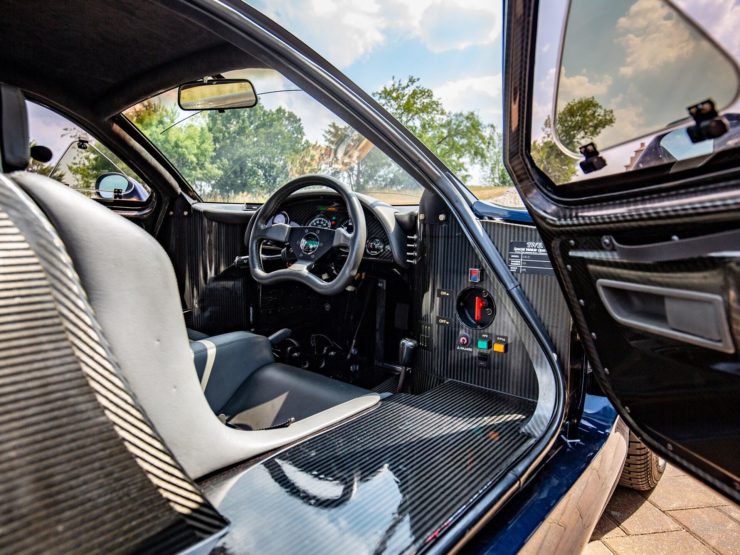

The XJR15 was light, racing car light, tipping the scales at just 2,315 lb. So with 450 bhp propelling it and a highly aerodynamic body with which to slip through the air the car’s top speed was 220 mph.
In 1991 JaguarSport ran the Jaguar Intercontinental Challenge, supporting F1 races at Monaco, Silverstone and Spa for owners of XJR15s.
This series of races provided owners with the opportunity to drive their cars in the way they were designed to be driven, very fast indeed. The winner was Armin Hahne who took home a cool half million US dollars. But those who did not win no doubt got a huge amount of enjoyment fulfilling a dream of racing a Le Mans car: and of course they were not limited to the Intercontinental Challenge events but as they owned their car they could enjoy it whenever they wished.
As there are so few in existence it is unusual for a Jaguar Sport XJR15 to come up for sale. For those who would are looking for one, there is a Jaguar XJR-15 to be offered by RM Sotheby’s at their Monterey Auction which will be held between 18-20 August 2022.
The car being offered is serial number 018 and it is in the road going specification fitted with the five speed all synchromesh gearbox.
A unique feature of this car is that it is the “Japan Study Car” that was used for aerodynamic studies and testing of hybrid energy recovery systems by a former Nismo Racing engineer.
It has since been restored back to its original specification by Bespoke Motors in Australia, who are marque experts, in 2015.
If you would like to read more about this car or register to bid you can visit the listing here. The price guide is set at 1,200.000 to 1,400,000 USD.
